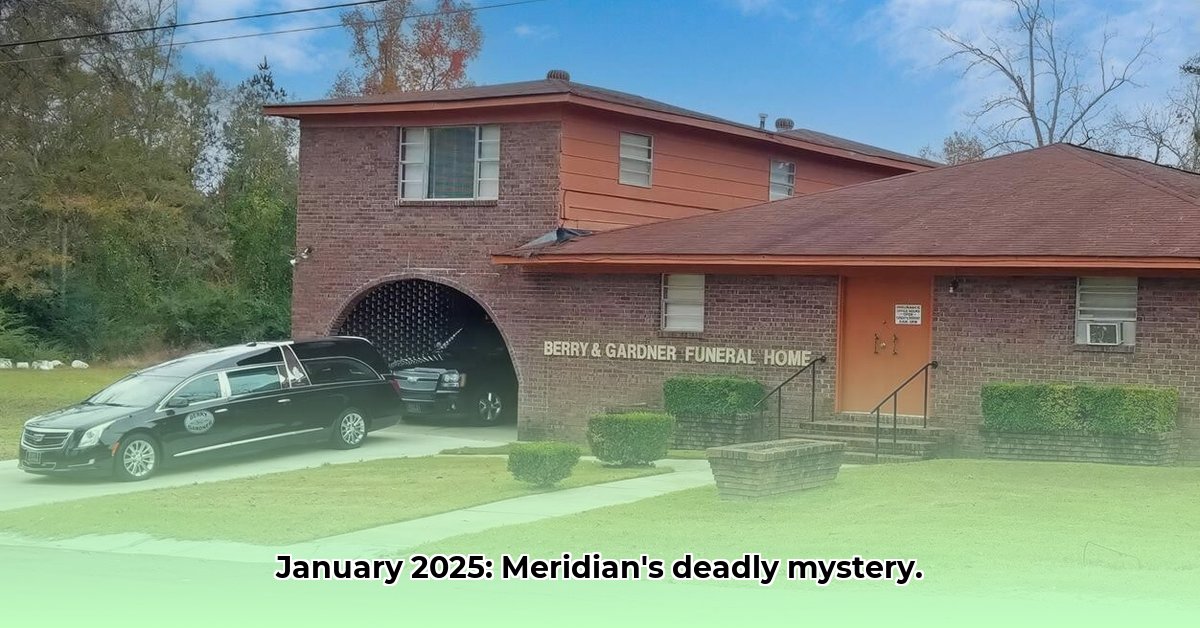
Berry and Gardner Funeral Home in Meridian MS: Unraveling a January 2025 Death Mystery
An unusual spike in mortality rates among Meridian, Mississippi residents aged 50-80 occurred in January 2025, according to data from Berry & Gardner Funeral Home. This increase sharply contrasts with the lower mortality rates observed in the latter half of 2024. This report examines potential causes, highlighting the need for further investigation and improved data collection methods. While the data raises serious concerns, it's crucial to acknowledge its limitations: the analysis is based solely on Berry & Gardner's records, representing only a portion of Meridian's deaths. For comparison, see data from other funeral homes like this one.
Understanding the Numbers: A Preliminary Analysis
Data gathered from Berry & Gardner Funeral Home's obituaries on February 17, 2025, revealed a statistically significant increase in deaths among the 50-80 age group during January 2025. This increase is notable when compared to the preceding months and the same period in previous years. However, the data lacks information on the cause of death, a significant limitation. Further, the data only represents a fraction of Meridian's total mortality. A more comprehensive analysis incorporating data from other funeral homes and official health records is required.
Did you know? Preliminary findings show a disproportionate number of January 2025 deaths were associated with Ochsner Rush Health. This warrants further investigation into the potential role of the hospital.
Geographic Concentration and Potential Connections
The majority of deaths reported in January 2025 were geographically concentrated in Meridian and surrounding areas, suggesting a localized event, potentially an environmental factor or a localized health crisis. The inclusion of some deaths in Quitman, however, broadens the potential area of impact, complicating precise identification of the underlying cause.
Key Fact: The spatial clustering of deaths suggests a common environmental or health-related exposure as a potential underlying factor. Further epidemiological investigation is critical.
Exploring Potential Explanations: A Tentative Assessment
Several hypotheses are under consideration but require further investigation. These include: a novel or unusually virulent infectious agent, an environmental toxin, unseen seasonal fluctuations, or a combination of factors. Several of the deaths listed in the Berry & Gardner records involved patients who received care at Ochsner Rush Health. Understanding the nature and extent of this association is crucial.
"While we have observed an unusual increase in mortality, it's premature to draw definitive conclusions without more data," says Dr. Anya Sharma, Epidemiologist at the Mississippi State Department of Health. "A comprehensive investigation is underway."
Next Steps: A Collaborative Approach to Understanding the Data
Addressing this issue requires a multifaceted approach:
- Berry & Gardner Funeral Home: Thorough review of records to identify potential commonalities among deceased individuals. Collaboration with public health officials to improve data collection and reporting procedures.
- Public Health Officials: Comprehensive investigation utilizing data from all sources (funeral homes, hospitals, official records) to determine the exact causes of death.
- Ochsner Rush Health: Examination of patient records from January 2025 to explore potential links between hospital care and the observed mortality increase.
Actionable Step: Immediate implementation of enhanced data-sharing protocols between funeral homes, hospitals, and public health agencies is critical.
The Urgent Need for Improved Data: A Call to Action
The data from Berry & Gardner Funeral Home highlights a significant public health concern. However, the limitations of the available data necessitate further, more comprehensive investigation. Improved data collection methods, including real-time reporting and standardized record-keeping across all relevant institutions, are crucial for preventing future health crises. Further analysis and research are needed to fully comprehend the mortality patterns and determine specific causes. Public health surveillance must be strengthened to promptly identify and address potential health challenges in a timely manner.